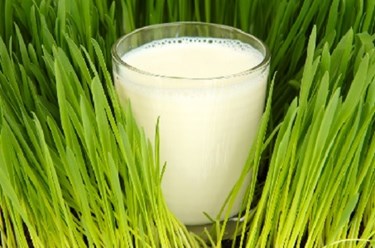Pressure From Walmart And Other Retailers Has Dairy Suppliers Looking To Increase Sustainability (Part One Of Two)
By Isaac Fletcher, contributing writer, Food Online

Walmart’s use of a sustainability index to evaluate private-label suppliers has led the dairy industry to focus on cutting greenhouse gas emissions in order to stay competitive as a supplier for the retail giant
Using a sustainability index, a practice that began in 2013, Walmart has been evaluating its suppliers based on greenhouse gas emissions. The index, which is answered by Walmart suppliers twice a year, is a set of 14 category-specific questions regarding sustainability performance on key issues. The questions have been developed by the Sustainability Consortium, a science-based, multi-stakeholder sustainability effort. By 2017, Walmart pledges to purchase 70 percent of all goods in its U.S. stores from suppliers that apply the index to their production to assess and modify their processes to be more sustainable. This pressure has inspired the Innovation Center for U.S. Dairy to fund research projects for the development of tools that dairy producers can use to monitor emissions and track their carbon footprint. The Innovation Center’s Sustainability Council has set a goal of 25 percent greenhouse gas reduction by 2020.
Re-using energy has been a staple of the dairy industry since the 19th century, but much can still be done to reduce use. Sustainability Council member and principal of energy consulting firm Solution Dynamics, Calvin Wohlert, argues “Most dairies [are able to] cut their energy bill by 20 percent, some by as much as 40 percent, and that has a big impact on the bottom line.” A reduction in energy costs is not just important to be more profitable, but with retailers asking for more detailed sustainability information from suppliers, dairy producers must increase sustainability efforts in order to stay competitive in the retail environment. For many, the best place to start is an energy audit to see where and how improvements can be made.
Some new opportunities have been discovered as the gap between electricity and natural gas costs widen. A method from the past that has been recently revisited due to this cost gap is the coupling of refrigeration compressors with gas engines, and then reusing the engines’ waste heat for boiler feed water. A change such as this one provides a clear cost advantage over electricity, even when accounting for the necessity of rebuilding the gas engine after 50,000 hours of run time.
Liquid gas is the biggest contributor to greenhouse gas emissions related to fluid milk production, accounting for 29 percent of the total, according to a study published in the International Dairy Journal. With this in mind, Oakhurst Dairy in Portland, ME, started to use biodiesel to power its delivery fleet, cutting emissions 70 percent and at a lower cost than straight diesel fuel. Oakhurst has a track record of environmentally friendly initiatives and contributions such as: fostering reforestation efforts, earmarking profits for groups that support healthy environments, and early conversion to eco-friendly refrigerants. Its use of biofuel and partnership with Maine Standard Biofuels, however, may have the biggest impact.
Energy reductions and alternatives for liquid gas are great places for dairy producers to start fostering production sustainability, with proven, reliable, results from the few paving the way for the many. But these two factors are only a part of the picture. Part two of Pressure From Walmart And Other Retailers Has Dairy Suppliers Looking To Increase Sustainability will discuss water efficiency, another integral part of the sustainability picture.
